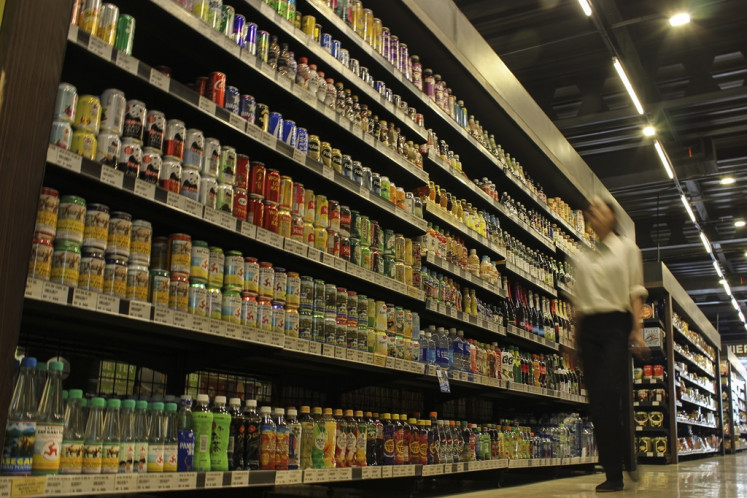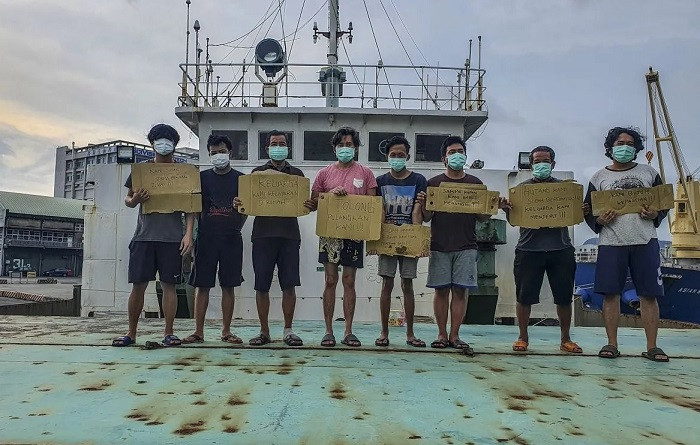Popular Reads
Top Results
Can't find what you're looking for?
View all search resultsPopular Reads
Top Results
Can't find what you're looking for?
View all search resultsFuture readiness: Why smaller businesses’ success matters
Research has shown that SMEs and mid-sized companies tend to be less resilient than their larger counterparts, but they in turn display much higher levels of agility.
Change text size
Gift Premium Articles
to Anyone
 Big boost for SMEs: GO-FOOD has grown to become the number one online food delivery service in Indonesia and Southeast Asia, with 400,000 merchant partners as of today in Southeast Asia, of which 96 percent are Micro, Small and Medium Enterprises (MSMEs). The revenue of GO-FOOD’s MSME partners has increased by 3.5 times on average since they first joined the platform.
Big boost for SMEs: GO-FOOD has grown to become the number one online food delivery service in Indonesia and Southeast Asia, with 400,000 merchant partners as of today in Southeast Asia, of which 96 percent are Micro, Small and Medium Enterprises (MSMEs). The revenue of GO-FOOD’s MSME partners has increased by 3.5 times on average since they first joined the platform.
S
mall and medium-sized enterprises (SMEs) and mid-sized companies are the backbone of many countries’ economies, so we must work together to ensure their success and their impact on some of the world’s biggest and most pressing issues.
Smaller companies represent 90 percent of all companies and are responsible for nearly 70 percent of both jobs and gross domestic product (GDP) worldwide.
Taking a closer look at these companies, it is therefore perhaps unsurprising that the World Economic Forum’s “Future Readiness of SMEs and Mid-Sized Companies: A Year On” report finds that smaller businesses have what it takes to enable widespread growth, innovation and sustainability in our global, regional and local economies. Now is the time to harness this potential.
SMEs at the frontline of global turbulences
The post-COVID era is significantly more challenging than most people had initially hoped. Heightened geopolitical tensions, the energy crisis, supply chain disruptions, hyperinflation and extreme weather events are just a few of the difficulties that will make the coming decade a demanding one.
SMEs and mid-sized companies are often at the frontline of such turbulence. Indeed, some estimates of small business closures as a result of COVID-19 are as high as a third closing down permanently due to the shock of the pandemic.
This leads many of those that remain to be absorbed by a focus on survival and growth, which in turn often prevents them looking at other elements that are essential for them to thrive in the long term.
According to the report, the top challenge currently preoccupying 67 percent of executives of SMEs and mid-sized companies is survival and expansion and almost half of them highlight talent as one of their main challenges. By comparison, just 25 percent say that one of their main areas of focus is technology and innovation and only 7 percent highlight sustainability as a key challenge.
So the question we must ask is this: how can smaller companies not only ensure their immediate survival. but are also in a position to leverage their unique abilities to ensure their long-term success and future readiness?
Being future ready includes three different core capabilities:
First, long-term growth: Ability to generate lasting financial strength driven by innovative business models, products and/or services.
Second, societal impact: Ability to not only address both positive and negative potential externalities but, most importantly, that any business outcomes affect society positively and in line with environmental, social and governance goals.
Third, adaptive capacity: Ability to develop high levels of resilience and agility, enabling the company to bounce back in difficult times and to identify and seize opportunities as they emerge, and to create disruption in business models of the future.
This will not only enable them to thrive but also to successfully shape the nature of growth, innovation and sustainability of our global, regional and local economies.
To ensure impact, future readiness capability building should not be developed as ad hoc initiatives, but instead be embedded into key corporate strategies and decision-making processes – ideally from the very start so that it becomes part of the fundamental building blocks of the company itself.
Given the current context, we found that a focus on adaptive capacity – resilience and agility – can be of particular relevance for a step change in the future readiness of smaller companies, particularly in volatile and uncertain environments.
Research has shown that SMEs and mid-sized companies tend to be less resilient than their larger counterparts, but they in turn display much higher levels of agility.
Working on resilience can help a business move out an overwhelming focus on the short term and overwhelming focus on survival, while making the most of their high level of agility – one of smaller companies’ most important competitive advantage.
To boost resilience, SMEs and mid-sized companies can learn from the below depending on their level of maturity:
- Emergence: Authentic leaders positively and strongly impact the future readiness of their companies. They lead with a vision and values, self-awareness, self-regulation, positive modelling and encouraging authenticity. They tend to empower employees, which subsequently motivates the latter to increase their efforts towards fulfilling the organizational mission.
- Development: Talent fit is to be understood as a major driver of resilience for smaller companies. In this context, the “right” people believe in the company’s purpose, work collaboratively with others and have complementary qualities like resourcefulness and passion in fulfilling their roles. Smaller companies can appeal to values and provide an environment aligned with these values.
- Consolidation: While leaders and talent fit significantly impact the resilience and future readiness of smaller companies, more mature companies need to focus on developing business frameworks such as orientation, business model flexibility, networks, digital infrastructure and governance. Using governance as an explicit business strategy is key, particularly as it is generally new territory for small companies. In addition, we have identified three opportunity areas where smaller businesses can leverage their high levels of agility.
- Digital: Smaller companies can take advantage of their quicker communication channels and close relationships to initiate and execute digital transformation at a faster rate than larger corporations, which often struggle to overcome inertia and motivate employees for change.
- Sustainability: Conduct a systematic and holistic business life cycle analysis, then leverage this data to inform the strategizing and prioritizing of low-carbon initiatives and build connect actions to the level of maturity of the organization in the sustainability space.
- Talent: Prioritize and communicate organizational culture and values, using informal HR practices to the company's advantage, plus prioritize employee-organization match as much as (or more than) skills and experience.
While SMEs and mid-sized companies can do a lot of the work needed themselves, there is also a need for the wider ecosystem and policy environment to support them.
This was highlighted as one of the major challenges for these companies, with 24 percent and 25 percent of them ranking funding and access to capital as well as policy environment respectively.
One particular area in which this can be done is through digital trade and the implementation of targeted measures aimed at harmonizing and driving interoperability of trade data across borders and supply chains to help small companies trade internationally.
It is also important to recognize the impact the wider policy environment has on their ability to thrive. Policy-makers, investors and other stakeholders must ensure they do what is in their capacity to contribute to building the future readiness of this segment of the economy.
SMEs and mid-sized companies have a unique ability and strengths to pivot their business models to be future ready. We must help them reach their full potential.
***
Olivier M. Schwab is managing director, World Economic Forum. Olivier Woeffray is practice lead, strategic intelligence, World Economic Forum.










